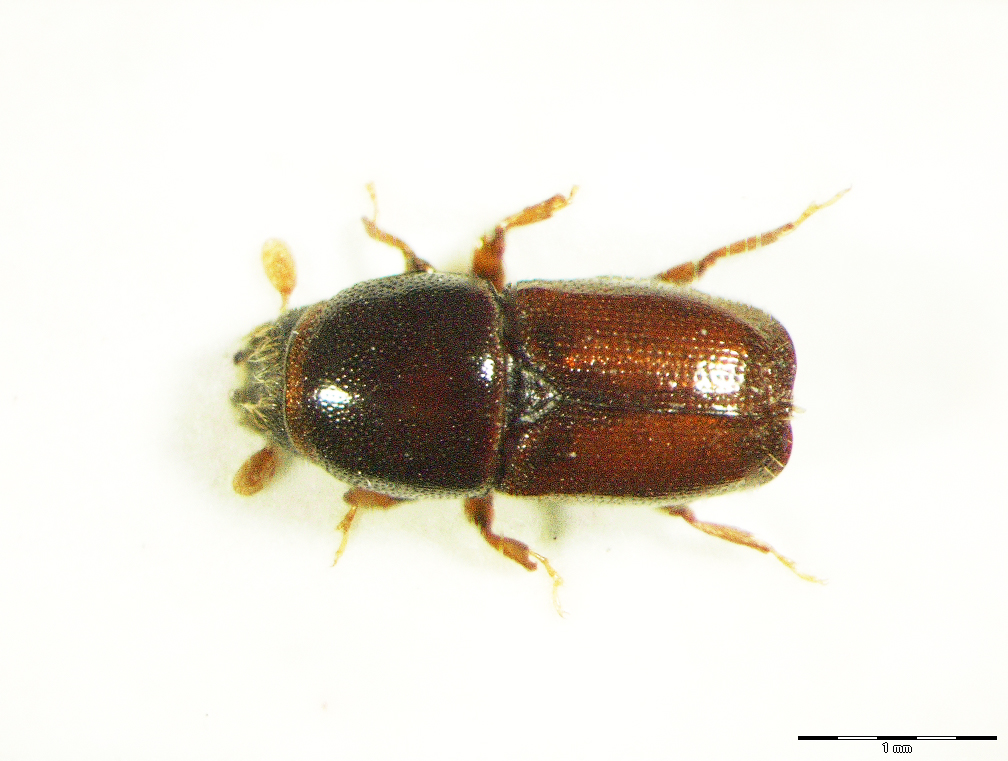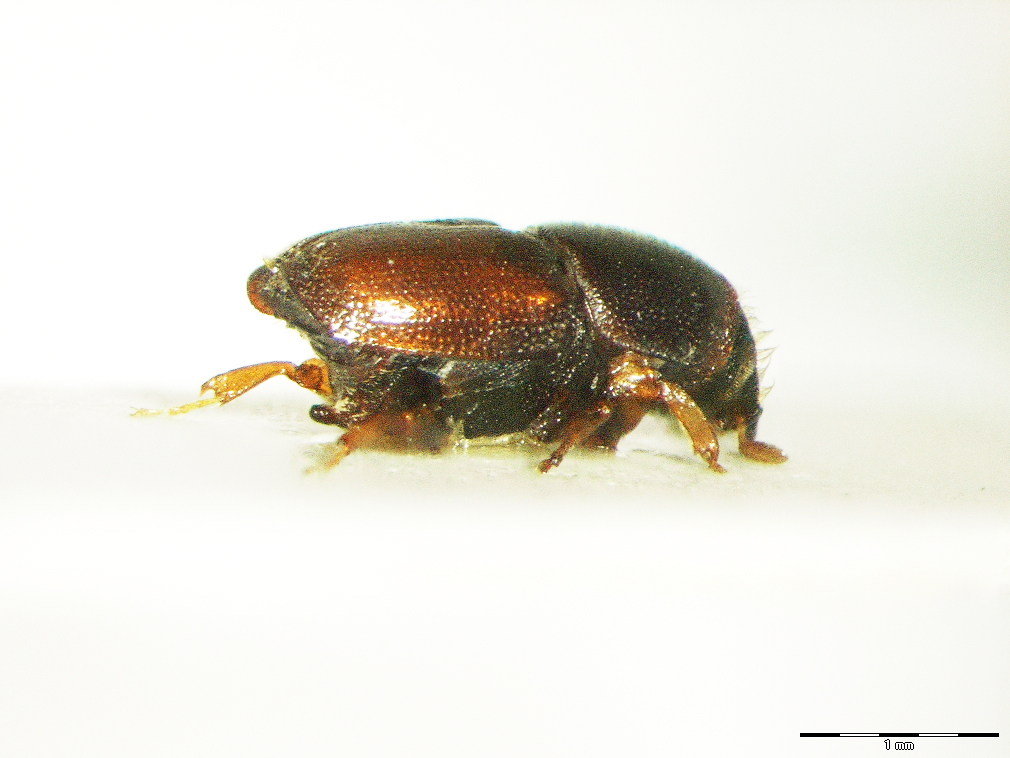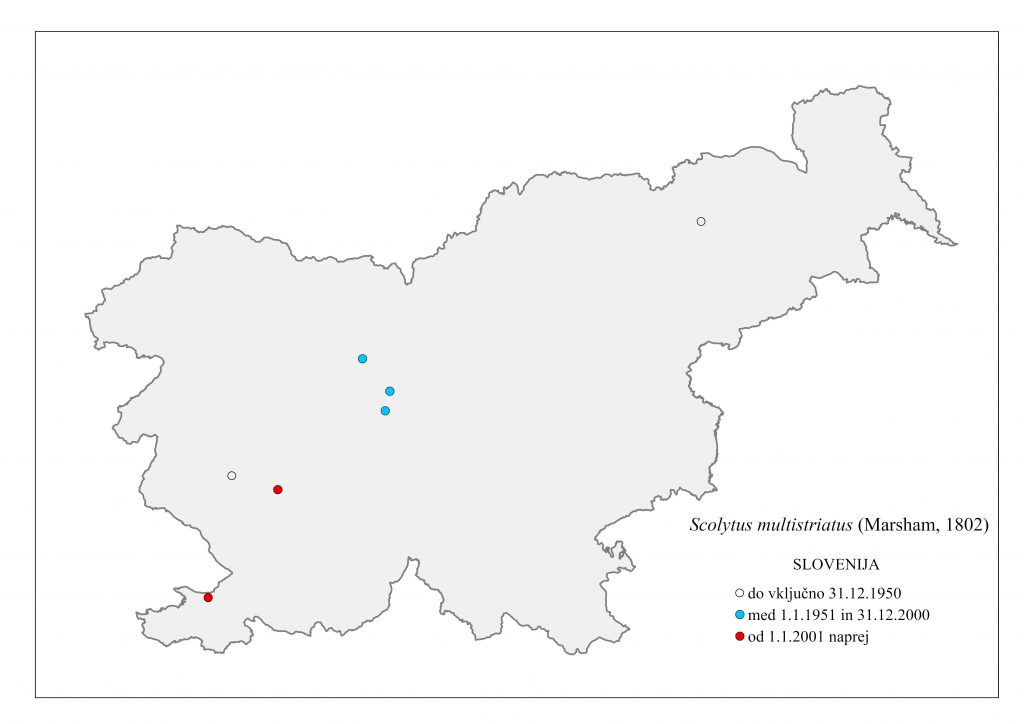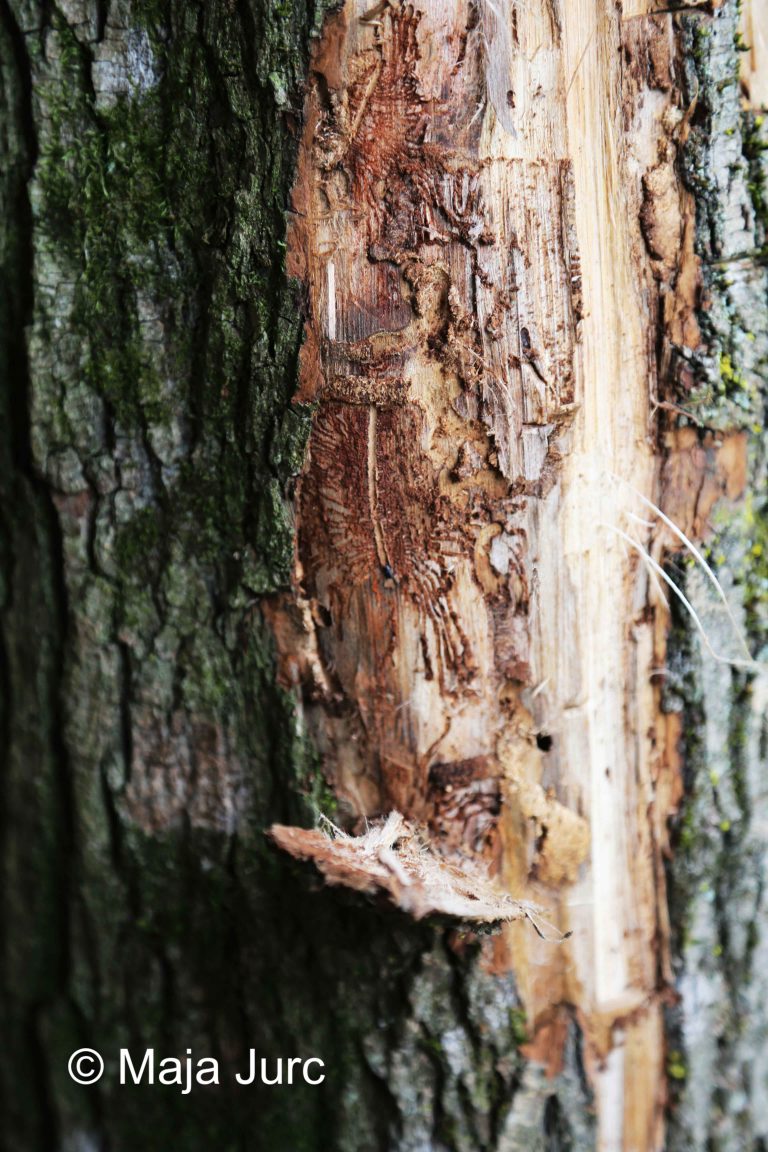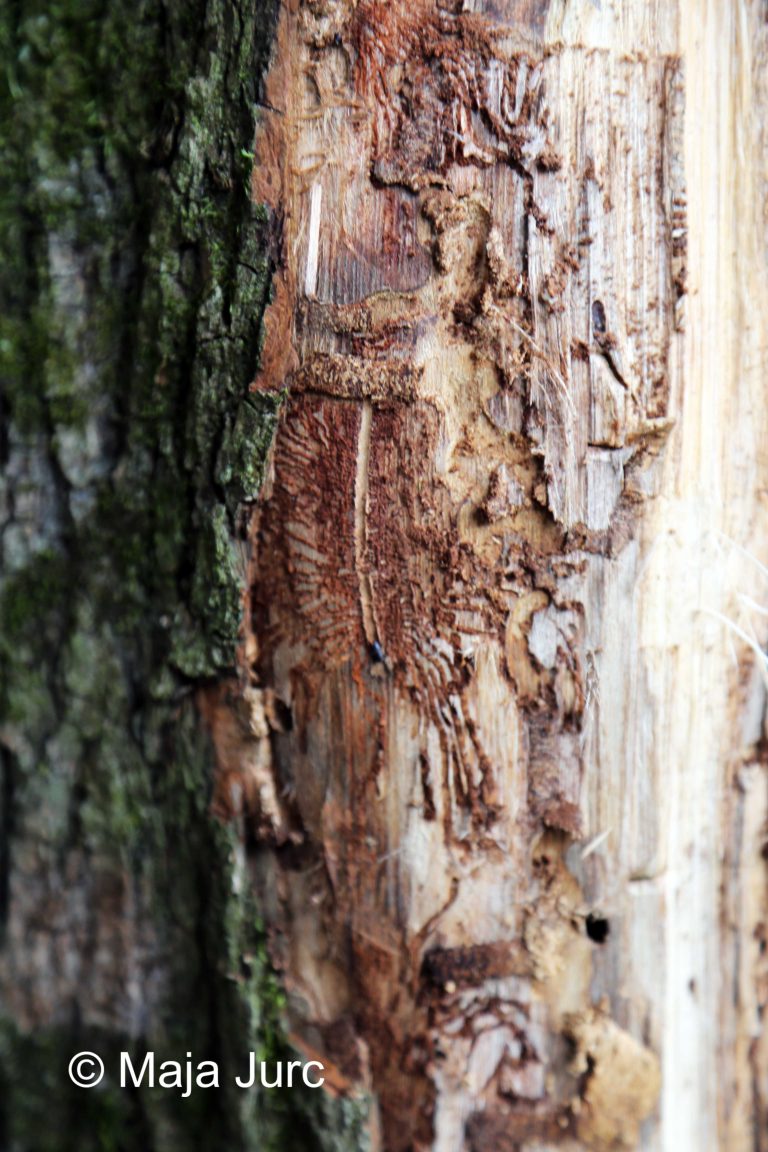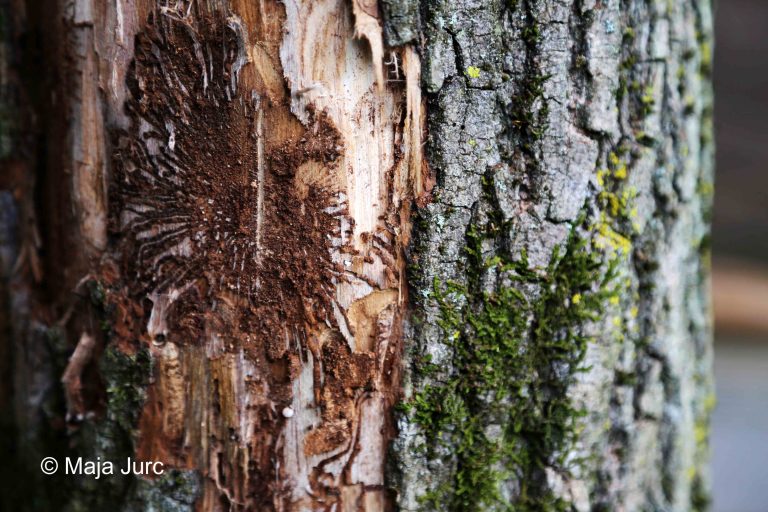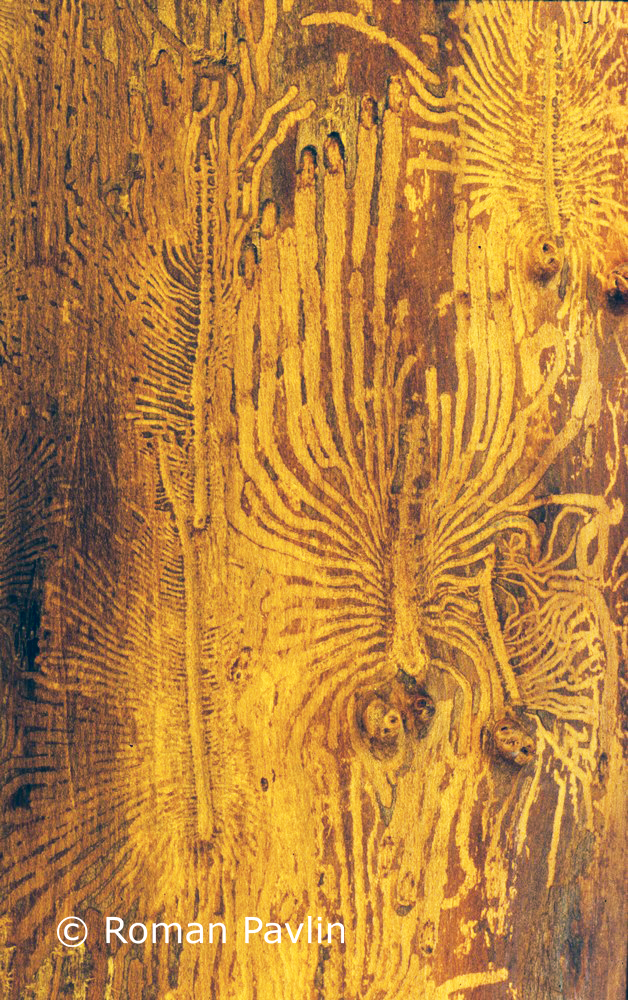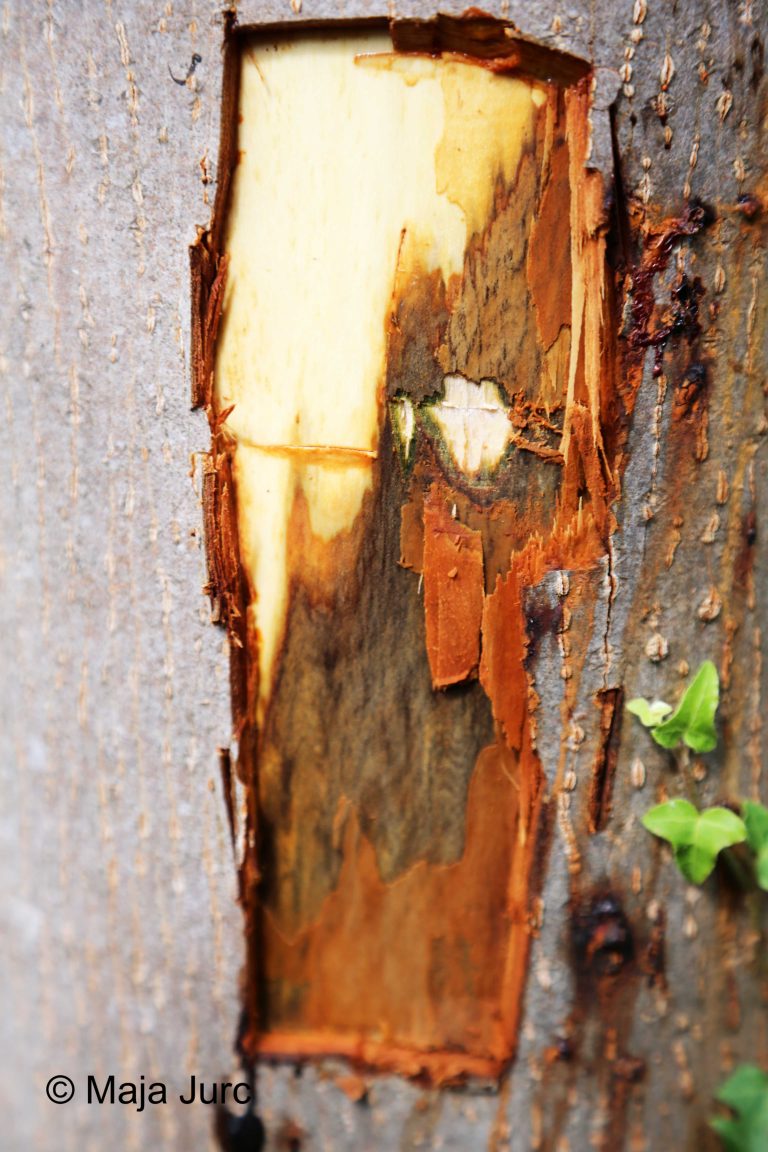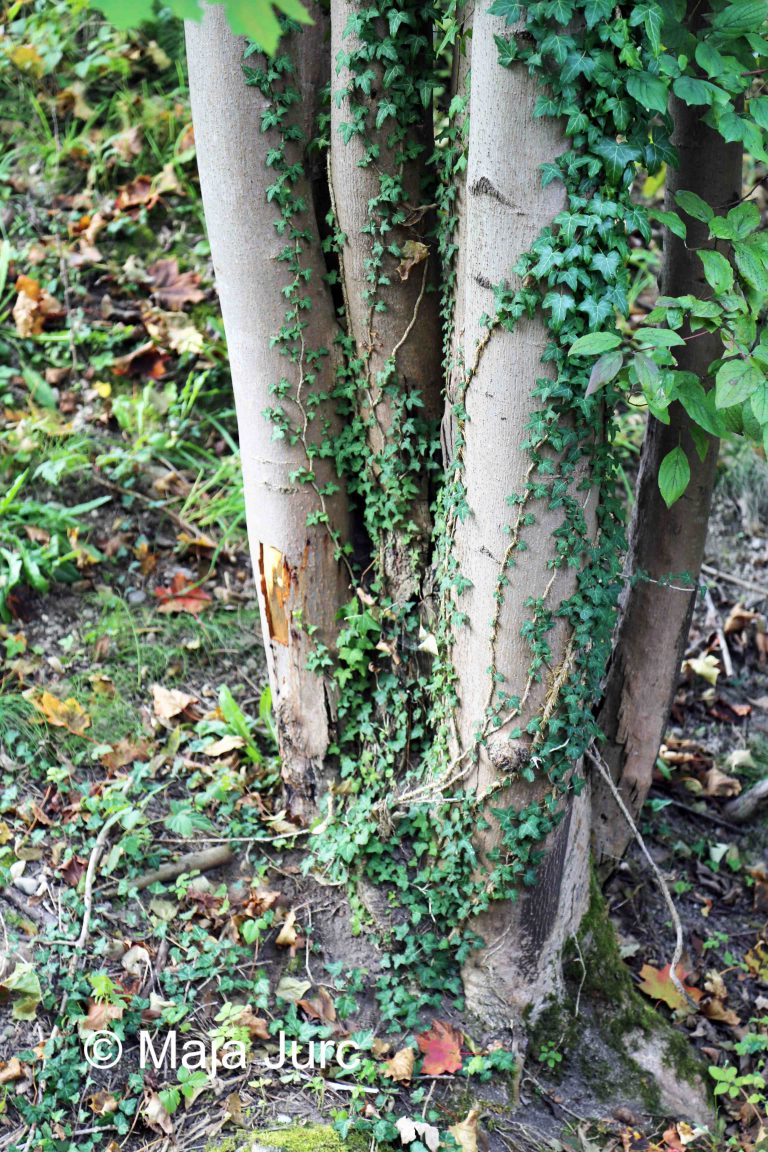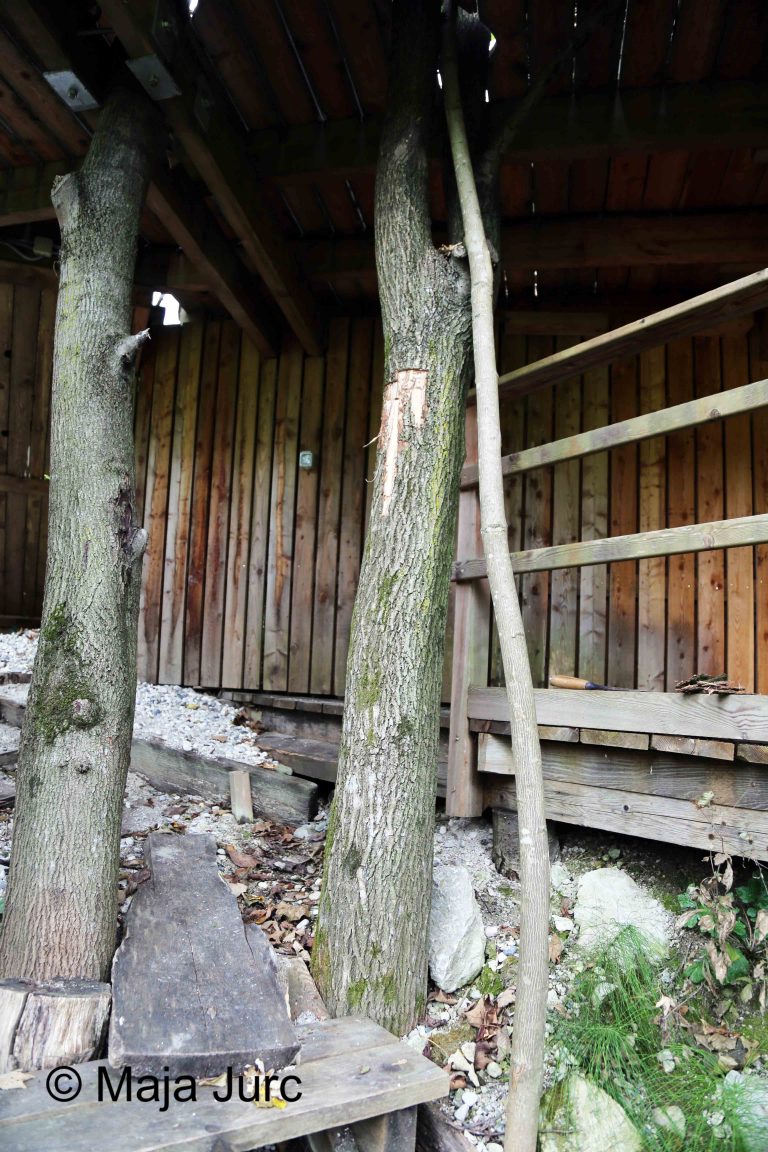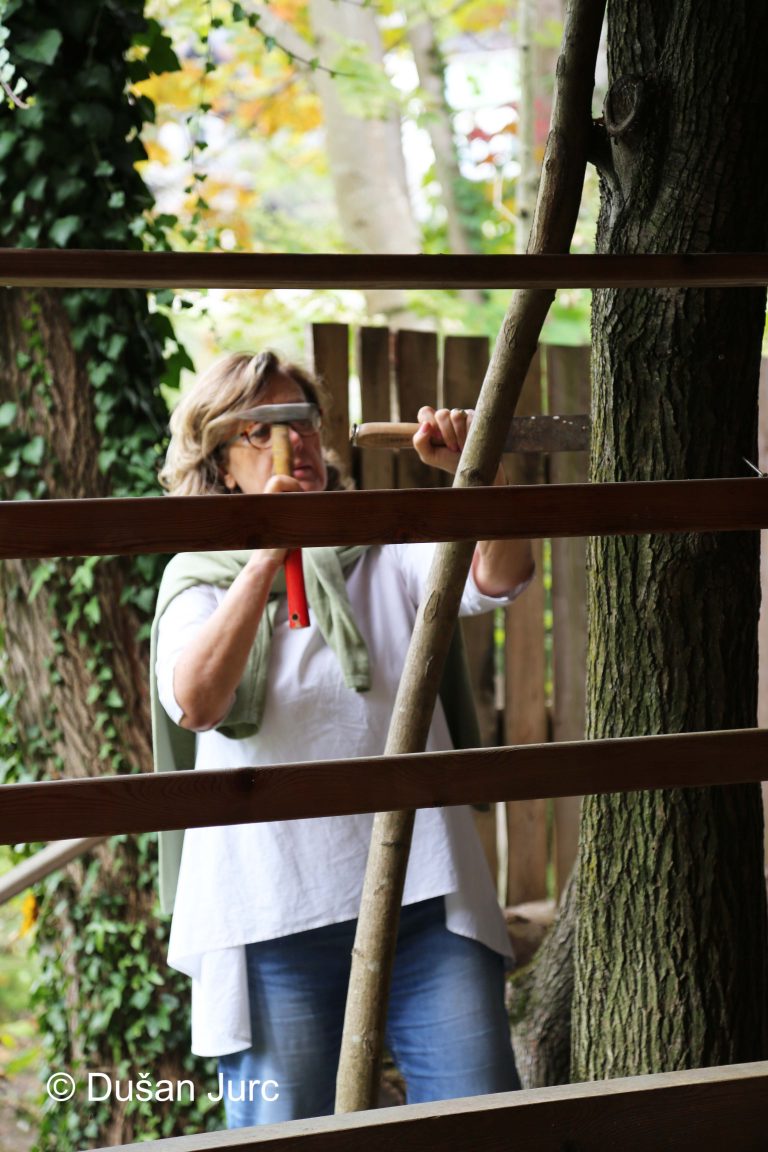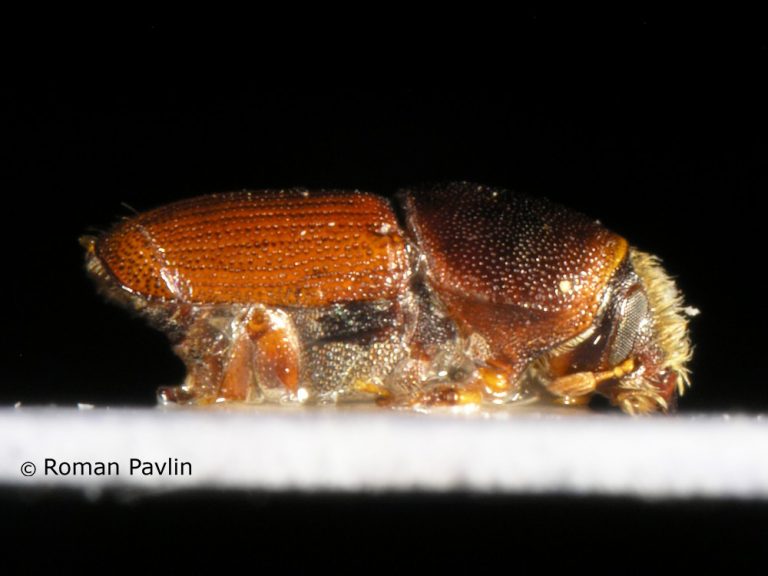32.05. Scolytus multistriatus (Marsham, 1802)
Presence
E: AL AU BE BU BY CR CT CZ DE EN FR GB GE GR HU IR IT LA LT LU MC NL NR NT PL PT RO SK SL SP ST SV SZ YU
N: AG EG MO TU
A: IN TR UZ
AUR
NAR
NTR
Figure 157: Scolytus multistriatus, dorsal, lateral (Photo: Maja Jurc)
Older catalogs and keys – citations of name
Grüne 1979: Scolytus multistriatus (Marsham, 1802); Freude, Harde, Lohse 1981: Scolytus multistriatus Marsham; Titovšek 1988: Scolytus multistriatus (Marsham); Pfeffer & Knížek 1993: Scolytus multistriatus (Marsham, 1802) a. m. multistriatus s. str.; Pfeffer 1995: Scolytus multistriatus multistriatus (Marsham, 1802).
Figure 158: Scolytus multistriatus, distribution map according to historical and recent data
Ecology and presence in Slovenia
The species is distributed in Europe, in the southern and western parts of European Russia, Ukraine, North Africa, Asia, Australia, the Nearctic and the Neotropics. In the 20th century, the species was distributed throughout most of Slovenia, with the exception of the NE. Only two new sites are known after 2000 (Figure 158). Populations are probably in decline due to elm dieback. Hosts are mainly Ulmus carpinifolia, U. laevis and U. hollandica, with exceptions of Prunus domestica and Populus tremula. Only Ulmus minor and U. glabra have been recorded as hosts in Slovenia. Phloemophagous and monogamous species. Develops two generations annually in southern Europe and one generation in northern Europe. It infests thin-trunked tree parts, the canopy and thinner trunk parts of weakened and dying old trees. The maternal tunnel system is longitudinally uniramous, lying mainly in the bark, the maternal gallery reaching 6 cm in length. The larval tunnels are dense and run transversely. Adult length is 2.0-4.0 mm. The abdomen rises obliquely from the 2nd sternite towards the elytra. A long, rounded, horizontal protrusion is located on the 2nd posterior sternite. Males have a flattened forehead covered with protruding hairs, while in females the forehead is convex and covered with sparse hairs, often without hairs (Figure 157). Young beetles perform maturity feeding on twigs and leaf petioles, making the species both secondary and primary. Young S. multistriatus beetles carry the spores of dangerous diseases Dutch elm disease (Ophiostoma ulmi and O. novo-ulmi), and therefore, together with S. scolytus, it is one of the two most economically important species of elm bark beetle. Pheromones: ( ̶ )-threo-4-methyl-3-Heptanol and ( ̶ )-ð-multistriatin in (Gerken 1977, Gerken et al. 1978); ( ̶ )-α-multistriatin in (Peacock et al. 1975, Pearce et al. 1975, Lanier et al. 1977).

